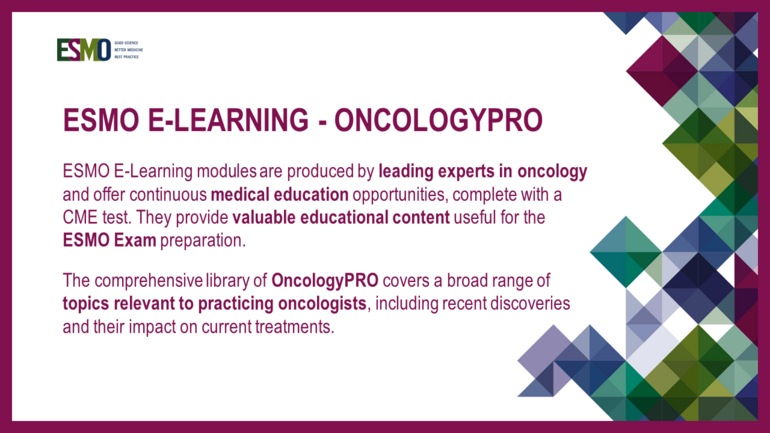In this E-learning module, the author elaborates on the individualisation of treatment for patients with early hormone receptor (HR)-positive/HER2-negative breast cancer. The clinical utility of gene expression signatures is discussed from the prognostic aspect as well as the predictive role, and information is given on extended adjuvant treatment. The part of the module on the optimisation of the use of gene expression signatures describes the agreement between tests, considers whether there are differences in the prognostic ability of tests and discusses how to integrate the result of the test with classic prognostic features, as well as the impact on clinical practice.
The module begins with some essentials on the type of biomarkers, their clinical utility, and levels of evidence. It goes on to present the use of biomarkers to guide decisions on adjuvant systemic therapy in women with early stage invasive breast cancer. The author discusses the threshold of recurrence risk that defines the patients who can be safely spared chemotherapy.
Essentials are provided in terms of genomic profiling and prognosis for HR-positive/HER2-negative patients by featuring key references on MammaPrint, OncotypeDx, PAM50 ROR, EndoPredict and data from prospective randomised trials designed to test the marker.
The author provides detailed data from the MINDACT, TAILORx, WSG-PlanB trials, in terms of patient’s characteristics, study endpoints and key results. Furthermore, she elaborates on the clinical practice guidelines from the aspect of validated gene expression profiles. She continues by presenting extended adjuvant therapy for HR-positive breast cancer and by providing a summary of head-to-head comparisons of risk classifications by six prognostic signatures and agreement among the tests. The next part of the module focuses on the effect of clinical risk on prognosis and the prediction of chemotherapy benefit, as well as on refining the risk assessment, the performance on clinical selection, and summarising the gene expression signatures in clinical practice.
The author concludes that the clinical utility of genomic prognostic tests is demonstrated in terms of decision on adjuvant chemotherapy for HR-positive/HER2-negative breast cancer. Their clinical validity is demonstrated in terms of decision on extended adjuvant endocrine therapy, but the clinical utility is still to be proved. Regulatory restrictions still limit the use of genomic assays outside clinical studies in many countries. The author underlines that classic clinicopathological features still matter. It is challenging to provide a universally accepted definition of the patients for whom the test would be most useful and multiple testing for the same patient should be avoided.


